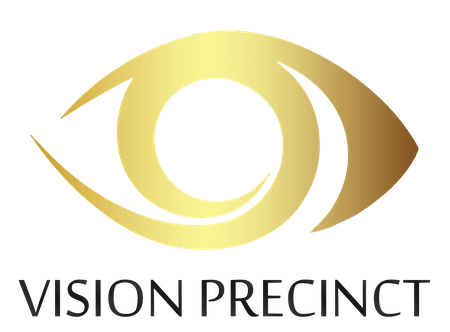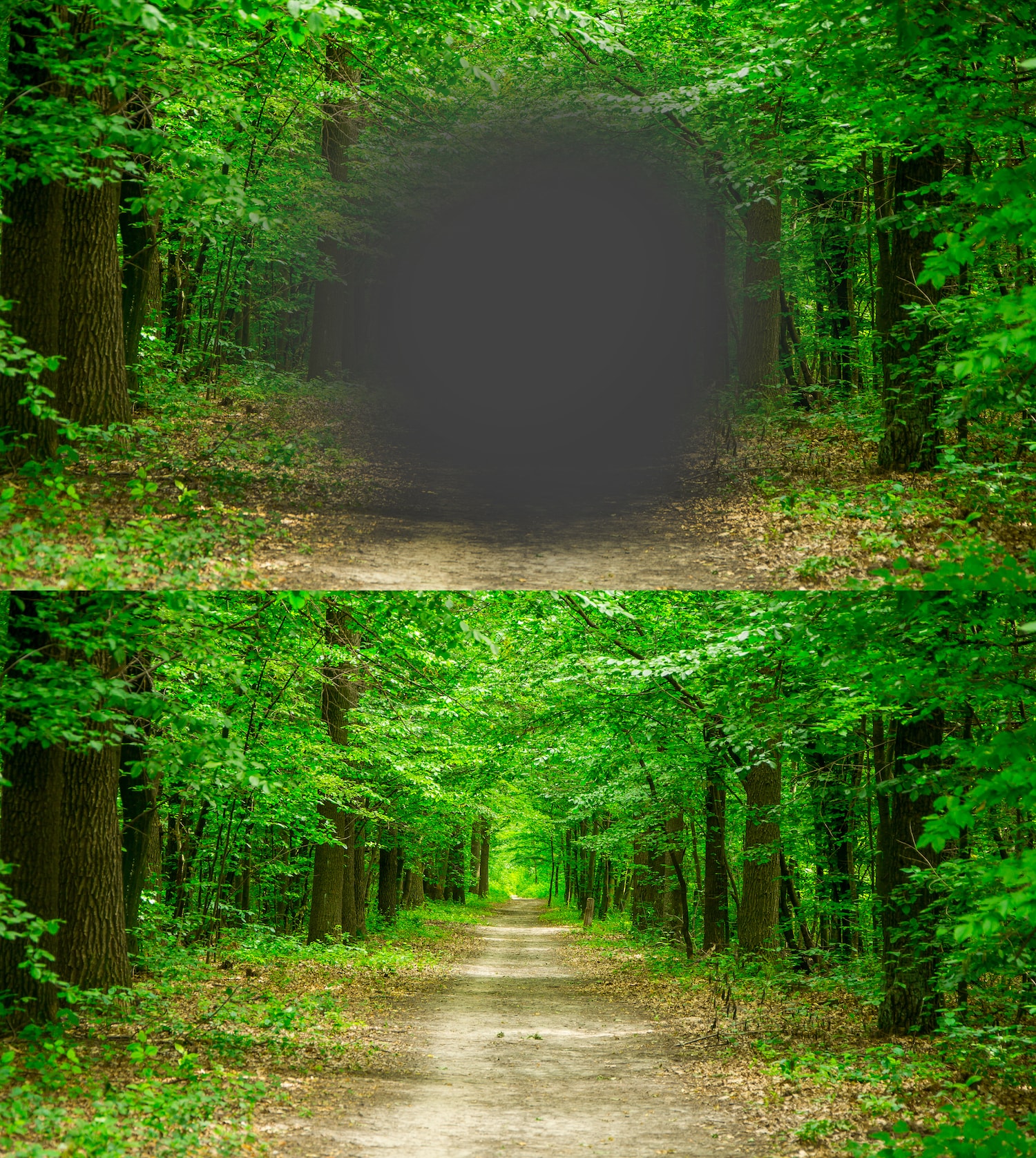Eye Conditions
The importance of regular eye exams goes beyond just making sure your vision isn’t blurry. Regular eye tests are important to detect and diagnose problems early; which allows us to treat them and prevent them from getting worse. Unfortunately, some eye diseases are irreversible and are difficult to notice on your own until the damage has already been done.
Keratoconus is a slow progressive degenerative eye disorder in which the cornea thins. While the cornea is normally thick and shaped like a dome; with keratoconus it thins and becomes shaped like a cone. This process of thinning and re-shaping is termed corneal ectasia. Keratoconus is one type of corneal ectasia.
This cone shape deflects the normal light rays as it enters the eye and affects the way your eyes focuses light and can distort your vision, resulting in significant visual impairment, but not blindness.
The poor-quality vision occurs because the image focus at multiple points instead of a single point, giving an image that is blurry, distorted, doubled, ghosted or flared, making it difficult to see objects at a distance and close-up.
As the condition of keratoconus advances, the vision becomes blurrier.
There is currently no known cause of keratoconus, however, there appears to be a genetic component and is more prevalent in certain ethnic groups, particularly in Pacific Islanders. This potential association is currently being studied. Keratoconus has also been linked to other medical conditions, such sleep apnoea, glaucoma and hay fever. Itchy eyes and eye rubbing may also be linked to keratoconus. It is best to avoid continuous or vigorous rubbing of the eyes.
Keratoconus typically progresses faster in younger patients; hence it is imperative to detect it early and initiate treatment.
Keratoconus treatment
Early Keratoconus:
In early or mild form of keratoconus, spectacle glasses or regular soft contact lenses may help to provide adequate vision. Corneal crosslinking, also known as corneal collagen cross-linking or CXL, can help strengthen corneal tissue to halt the bulging of the eye’s surface in keratoconus, thus stopping or reducing its progression. This procedure involves administrating riboflavin, a type of B vitamin, into the cornea, which then is activated with UV light. CXL may largely reduce the need for further complicated treatment options in advanced keratoconus.
Progressive Keratoconus:
As the disease progresses and the cornea become increasingly more irregular in shape, glasses and regular soft contact lens no longer provide adequate vision correction. At this later stage, more advanced and customised contact lenses are required to give a better visual outcome. This includes:
- Custom soft contact lenses – eg. KeraSoft lenses (Bausch + Lomb).
- Gas Permeable rigid contact lenses
- Piggyback contact lenses – i.e. wearing a custom soft lens under a gas permeable rigid lens
- Hybrid contact lenses -these lenses combine a highly oxygen-permeable rigid centre with a soft peripheral. The central gas permeable zone of the lens vaults over the cone-shaped cornea for increased comfort, providing the clear optics of a gas permeable contact lens and wearing comfort of soft lenses.
- Scleral and semi-scleral lenses – These are large-diameter gas permeable contacts that the periphery and edge of the lens rest on the sclera (white of the eye). The centre of scleral lenses vaults over the entire cornea; therefore, it does not apply pressure to the cone-shaped surface, giving a more comfortable and stable fit.
Some patients with keratoconus can’t tolerate or adapt to contact lens, or have tried different treatment options that no longer provide acceptable vision, then the final treatment to be considered is a cornea transplant.
See clearly with no glasses, no surgery, no daytime contact lenses!
Orthokeratology or OrthoK is a non-surgical procedure that eliminates the need for glasses or contact lenses during the day.
This procedure involves the patient wearing specially designed contact lenses at night while sleeping. These lenses temporarily reshape the cornea by few micro-millimetres to refocus the images to the back of the eye, thus remove or reduce refractive errors such as myopia, hyperopia and astigmatism. Upon waking up, the patient should see clearly for the whole day, without the need for glasses.
This procedure is safe and effective for most patients with mild to moderate refractive error and is an economical alternative to refractive surgery (LASIK) for those who don’t want eye surgery. It is most successful for patients with up to -6.00D of myopia, however, higher power can occasionally work effectively depending on the patient’s cornea and age.
The OrthoK lenses are manufactured by mapping the surface of the patient’s eyes with an advanced, computerized instrument called a cornea topographer. The optometrist uses this information along with the glasses prescription to design custom contact lenses for the patient’s eyes. The lenses are made from high oxygen permeability materials that allow the patient’s eyes to still receive plenty of oxygen overnight while sleeping, maintaining eye health.
Not only is OrthoK safe, but also reversible! If the patient chooses to stop wearing the OrthoK lenses, the cornea with revert to its normal shape within a short period. The Australian Therapeutics Goods Administration (TGA) includes OrthoK lenses.
Like all contact lens wear, there is a small risk of serious eye infections and so does OrthoK lens wear. Normally, infections can be treated by your optometrist, however, the risk can be significantly reduced and minimised by following the cleaning and lens care instructions and only wearing the OrthoK lenses as prescribed by the optometrist.
The cost for OrthoK treatment is approximately between $1300 -$2000, depending on the patient’s eye prescription and the type of custom lenses required.
The use of artificial teardrops is a palliative (soothing) treatment that helps symptoms for a few minutes but does not treat the underlying cause of the dry eye disease.
If you have chronic (long-lasting) dry eye, it is important to use the drops even when your eyes feel fine, to keep them lubricated.
Myopia control is the use of specific treatments to slow the progression of near-sightedness in children. Myopia control measures typically are prescribed by an optometrist.
With all types of glaucoma, the nerve connecting the eye to the brain is damaged, usually due to high eye pressure.
The most common type of glaucoma (open-angle glaucoma) often has no symptoms other than slow vision loss. Angle-closure glaucoma, although rare, is a medical emergency and its symptoms include eye pain with nausea and sudden visual disturbance.
Treatment includes eye drops, medication and surgery.
Macular degeneration causes loss in the centre of the field of vision. In dry macular degeneration, the centre of the retina deteriorates. With wet macular degeneration, leaky blood vessels grow under the retina.
Blurred central vision is a key symptom.
A special combination of vitamins and minerals (AREDS formula) may reduce disease progression. Surgery may also be an option.
Cataracts are cloudy areas that form in the lens of the eye. The lens is normally clear. Poor vision results because the cloudiness interferes with light entering the eye.
The opacities in the lens scatter the light, causing hazy vision, in the same way that a dirty window scatters light.
Diabetic retinopathy is one of the most common complications of diabetes. It can develop in people with both type 1 and type 2 diabetes, and usually affects both eyes. People with retinopathy have damaged blood vessels in their retina – the light-sensitive layer at the back of the eyes.
Early symptoms include floaters, blurriness, dark areas of vision and difficulty perceiving colours. Blindness can occur.
Mild cases may be treated with careful diabetes management. Advanced cases may require laser treatment or surgery.
Floaters are tiny specks that can be seen in your field of vision, especially when you look at a light-coloured area such as a blue sky or white wall. They are created when tiny clumps form in the clear, jelly-like substance (the vitreous humour) inside the eyeball.
At Vision Precinct, we provide all ranges of custom contact lenses that are available in Australia, including some overseas if required.
We fit contact lens to all range of refractive errors (myopia, hyperopia, astigmatism, presbyopia) and all type of irregular corneas, from corneal trauma to post corneal transplant.
If you have symptoms of watery eyes, it can be due to many factors and conditions. Normally, our eyes produce tears to help keep our eyes lubricated, keeping our vision clear and remove any dust or foreign bodies.
There are two main causes of watery eyes:
1. Excessive tear production
When our eyes have irritation or inflammation on the surface, the eye produces large volume of tears to help protect itself. This commonly occurs from foreign bodies, inward-turn of eyelashes rubbing on the eye or the outward-turn of the eyelid, or any eye allergies. Most of the time, a prolonged period of dry eye triggers watery eyes to defend itself and combat the irritation or dryness.
2. Blocked tear ducts
There are four drainage ducts in our eyelids that drain the normal volume of tears. When the ducts are blocked or narrowed, the tears cannot drain away normally, causing a built up of tears and watery eyes.
Treatments
Watery eyes can be annoying, stinging, burning, and irritating; however, they can usually be treated successfully and quickly. These are the most common treatment options:
- Lubricants eye drops
- Warm compresses
- Ocular medications
- Punctum and duct irrigation or dilation
- IPL light therapy and eye massage
- Lacrimal ducts surgery
Accurate diagnosis of watery eyes is required to give the best treatment options. We suggest making an appointment with our optometrist if you have any watery eye symptoms.





